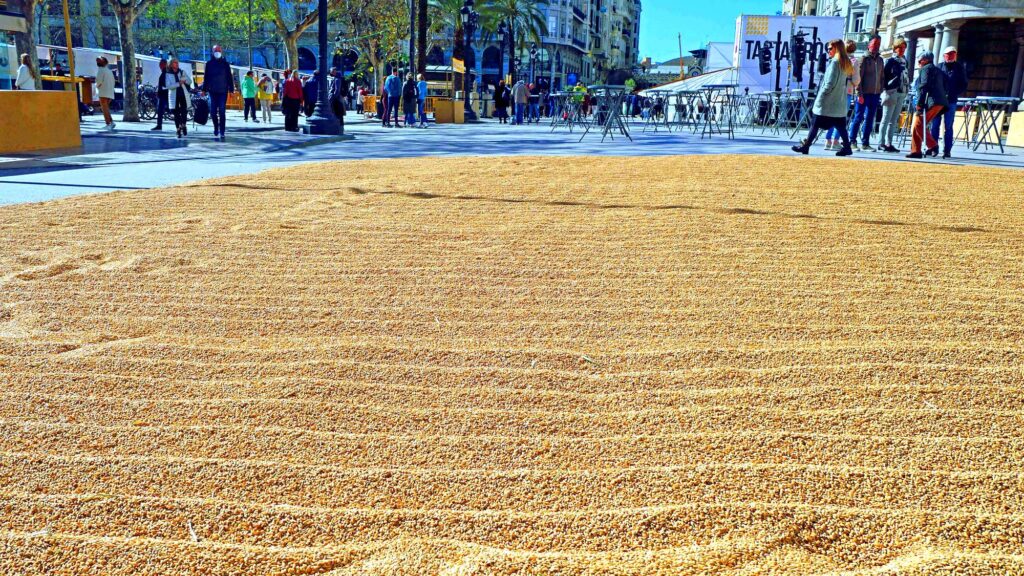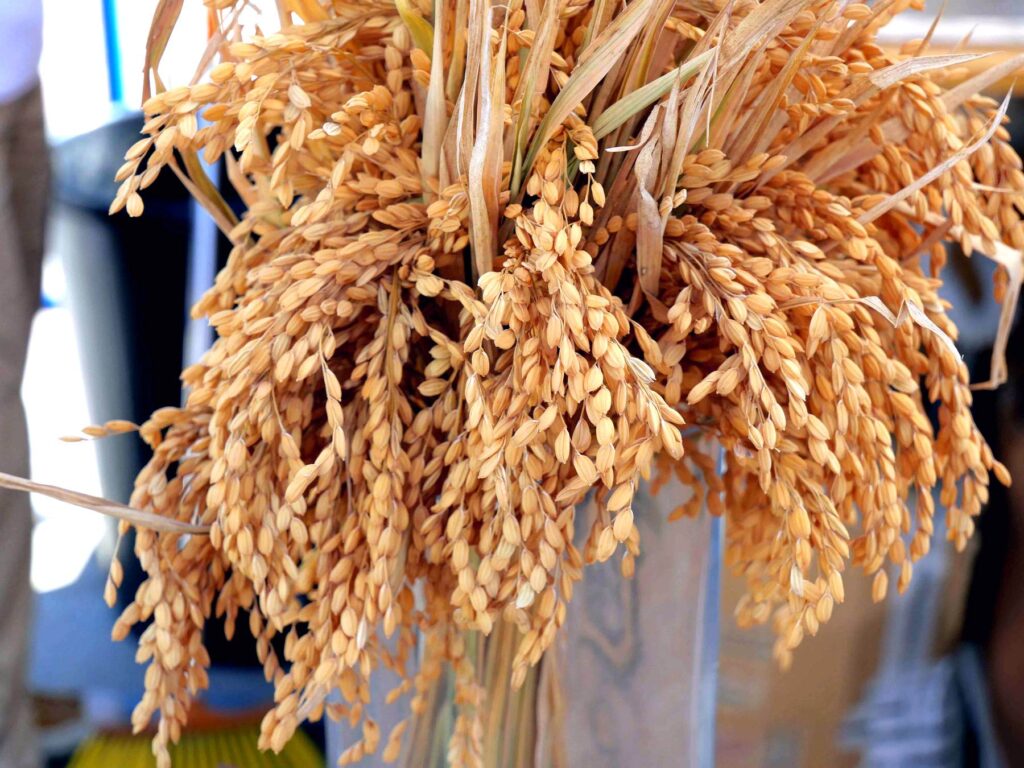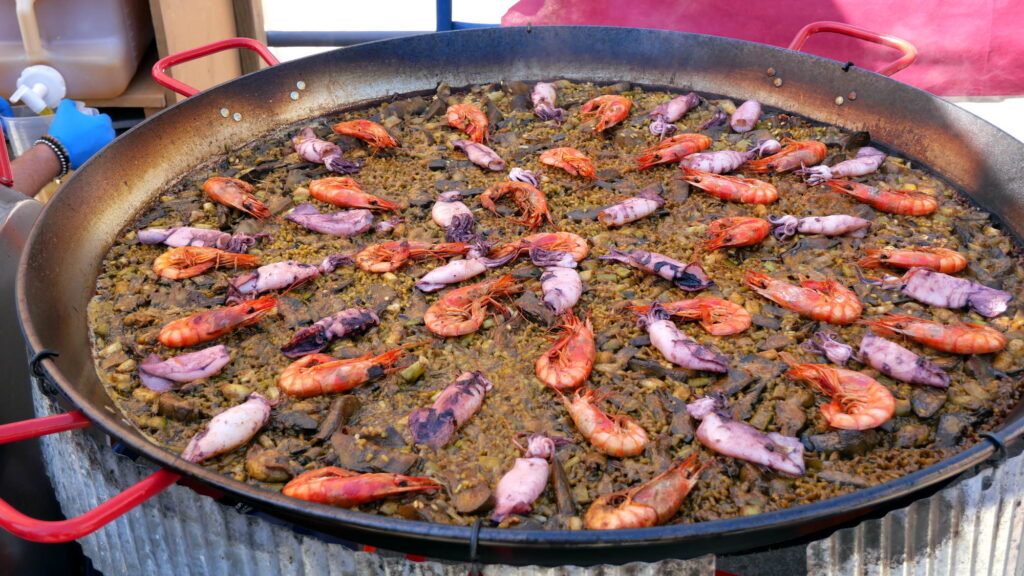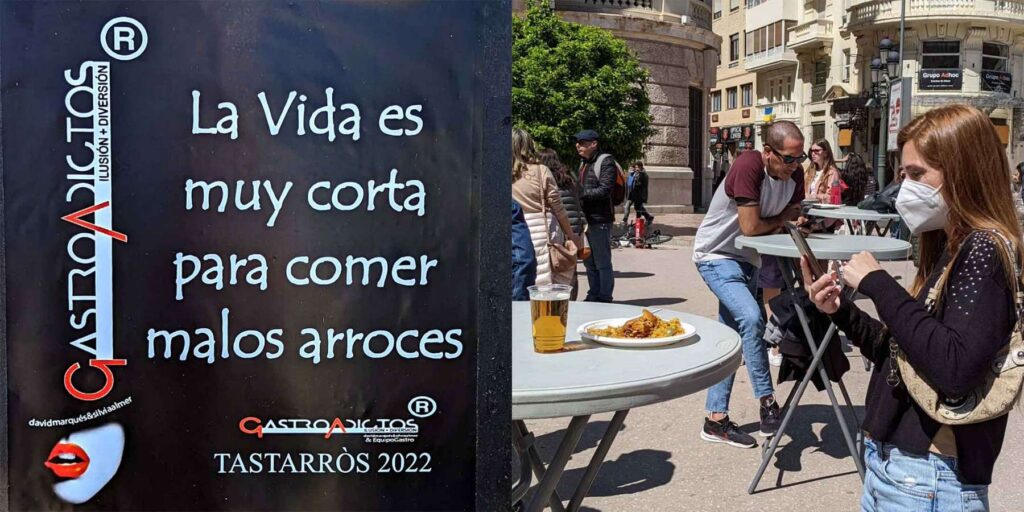
Once in a while, we have perfect timing by accident. One year, when we arrived in Spain to research a new guidebook, we stumbled into the Trujillo National Cheese Festival in Extremadura. Us and 10,000 or so Spaniards. When we landed in Valencia on a Friday this year, we had just enough time to shake off our jet lag before Tastarròs began the next day. Spaniards rarely miss a chance to throw a party, and when they can combine the party with the celebration of some kind of food—all the better.
“Tastarròs” is a Valencian word that translates more or less as “taste of rice.” The rices of Valencia have protected status in the European Union and are considered part of the region’s heritage. The EU backs up that designation (DOP) with substantial funds to promote it (www.sustainablerice.eu). What do you do when the European government gives you a pile of money? Throw a party. That’s Tastarròs.
Everyone is invited. The celebration begins by dumping a ton or so of brown rice on the street (above). Ostensibly, the pile is there to show how rice is threshed, but it serves mainly as a quasi-sandbox for all the little kids. They roll around it and play. So do some American tourists, but they can be forgiven for not grasping the unspoken etiquette.
This playfulness is accompanied by several speeches on the stage erected in front of the city hall, where chefs will later give demonstrations of how to cook various rice dishes. At the edges of the activity are a few traditional fishermen with boats and nets. They ply the waters of the Albufera marshlands for eels and small fish that go into the rice dishes.
Rice, not bread, is the staff of life in Valencia

Rice arrived in Valencia with the North African conquest of the Iberian peninsula in the early 8th century CE. Although the Moors first landed farther south in Andalucía, they found the best rice-growing region to be eastern and northeastern Spain. To this day, Spain’s principal rice-producing areas are in the swampy suburbs of Valencia and on the Valencia-Catalunya border at the mouth of the Rio Ebro. (The town of Deltebre on the northern bank is basically one rice paddy that stretches as far as the eye can see.) The three strains of PDO Arroz de Valencia rice are Senia, Bomba, and Albufera. They’re all medium-grained rices of the Japonica type.
When you get down to it, the point is to have a good meal

The Tastarròs festival makes a valiant effort to educate festival-goers about the local rice industry. It also puts Valencia’s rice tradition in some context with other rice cultures. But most people come to the festival to sample a whole range of rice dishes from different restaurants in Valencia and the surrounding communities. Contrary to what many non-Valencianos think, not all of these rice dishes are paella, and not all paellas are full of crustaceans or other seafood. (The one above is not quite finished, but it has shrimp and cuttlefish and is cooked with squid ink in the broth.) The feast continues for two days, and it sometimes seems each dish is better than the last.
As the sign below says, life is too short to eat bad rice.

